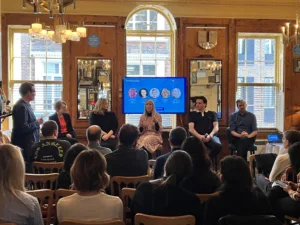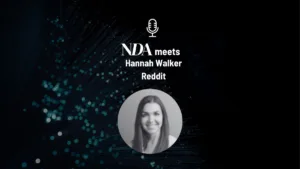During this year’s Cannes Lions Festival, NDA, in partnership with in-game advertising platform Anzu and Lumen Research, the global attention technology company, hosted a panel event to discuss the results of an extensive two-year study into the impact of attention on digital advertising and gaming.
NDA editor Justin Pearse moderated the discussion where he was joined by Natalia Vasilyeva, EVP Marketing & Strategy, Anzu; Alaina Pollock, VP Global Partnerships, Dentsu; Scott Linzer, GM North America, Lumen; Indy Khabra, CEO & Co-Founder of Livewire; and CJ Bangah, US Software and Digital Platform Subsector Leader at PwC.
Anzu’s Vasilyeva set the scene for the conversation by describing a scene that many contemporary parents will recognise. She said: “There’s a global shift going on. If you invite your kids to watch a movie with you at home, the chances are they’ll tell you they’d rather play a game together. We accept that as parents, so why aren’t we acknowledging it more as marketers?”
Vasilyeva believes that, with the average global ad blocking rate now estimated at 37%, 52% of all consumers not paying attention when ads come on the TV, and 65% of people skipping video ads at the first chance they get, many advertisers are beginning to question the quality of their existing media strategy and are looking for more effective ways to spend their ad budgets.
Khabra agreed that, from an ‘attention’ perspective, in-game advertising is a relatively untapped channel for marketers: “If you break down the average day: you sleep for 8 hours, you work for 8 hours, you spend another 4 hours commuting, eating, doing the laundry, and so on, leaving around 4 hours per day for leisure time.”
“Recent research suggested that the average male spends 83 minutes per day gaming, almost an hour and a half of that four hours, which is significant. That is going to start to become more important to advertisers looking at things like audience extension, audience engagement and those trying to reduce the wastage associated with other channels. There are already 3 billion people in the world gaming and, for advertisers, the technology is also ready.”
Attention seekers
Among the key findings of the Anzu/Lumen study were that in-game ads drive 98% viewability versus Lumen’s digital ad norm of 78% and that in-game ads drive more attention than Facebook and Instagram’s In-feed ads. On average, the research found that in-game ads drive 49% prompted recall with a high of 97%, while 6 in 10 players are at least likely to make a purchase after seeing an in-game ad.
Linzer argued that the drive toward sustainable digital advertising would help to popularise attention as an important media metric but that, within the digital media ecosystem, who ‘owned’ the attention metric was still to be decided: “Who is ultimately responsible for attention? Is it the brand itself? The agency? The publisher? My prediction is that within the next year or so DSPs will really start to get into this space. Being able to use a platform that can, at the press of a button, optimise to a higher source of attention is a very appealing prospect for many marketers.”
Pollock, however, called for more clarity around the term: “There are multiple tech vendors out there selling ‘attention’ solutions. Every agency and every client is looking at attention. First and foremost, we need to get on the same page with an agreed definition of what ‘attention’ actually means and what factors are most important. Are we talking about the quality of the creative that grabs the audience’s attention or are we talking about more technical matters like the scale and position of the ad?”
Bangah outlined her belief that ‘attention’ as a metric is the new ‘viewability’. She said, “Attention is a human metric whereas viewability was always more of a technical measure. We’re definitely seeing more interest in attention and people wanting to transact on that. In digital marketing, there is always the possibility of a disconnect between what is technically possible and what the humans on the other end of an ad will feel and do as a result of seeing it. In that sense, the interest in attention is a positive step for the industry.”
She added, “Across entertainment formats, games represent one of the most immersive and engaging formats in the world. We see more brands and agencies embracing video game advertising to reach consumers in a highly personalized and connected way. We expect to see significant growth in video game advertising revenue over the next few years.”
The report is available to download here.









